The cost of the MTA’s East Side Access megaproject has risen again — this time by another $995 million, to about $11.2 billion. That’s more than 2 1/2 times the original estimate when the project was first proposed in the 1990s.
See how both the cost and the timeline had shifted over time, and read more here about why the MTA says those increases have occurred.
In 1999
$4.3 billion
and be completed by 2009.In 2003
$5.3 billion
and be completed by 2011.In 2004
$6.3 billion
and be completed by 2012.In 2009
$7.3 billion
and be completed by 2016.In 2012
$8.3 billion
and be completed by 2019.In 2014
$9.7 billion
and be completed by 2021.In 2015
$10.2 billion
and be completed by 2022.Today
$11.2 billion
and be completed by 2022.LIRR riders: Share your experiences, tips with other commuters
Help your fellow LIRR riders navigate the “summer of hell” by reporting what delays, disruptions and other conditions you’re encountering during your commute. Did you discover a tip to avoid some of the issues? Share that too!
Submit a tip
Thank you for your submission. Check back soon to see if it was posted.
What you need to know about the LIRR right now
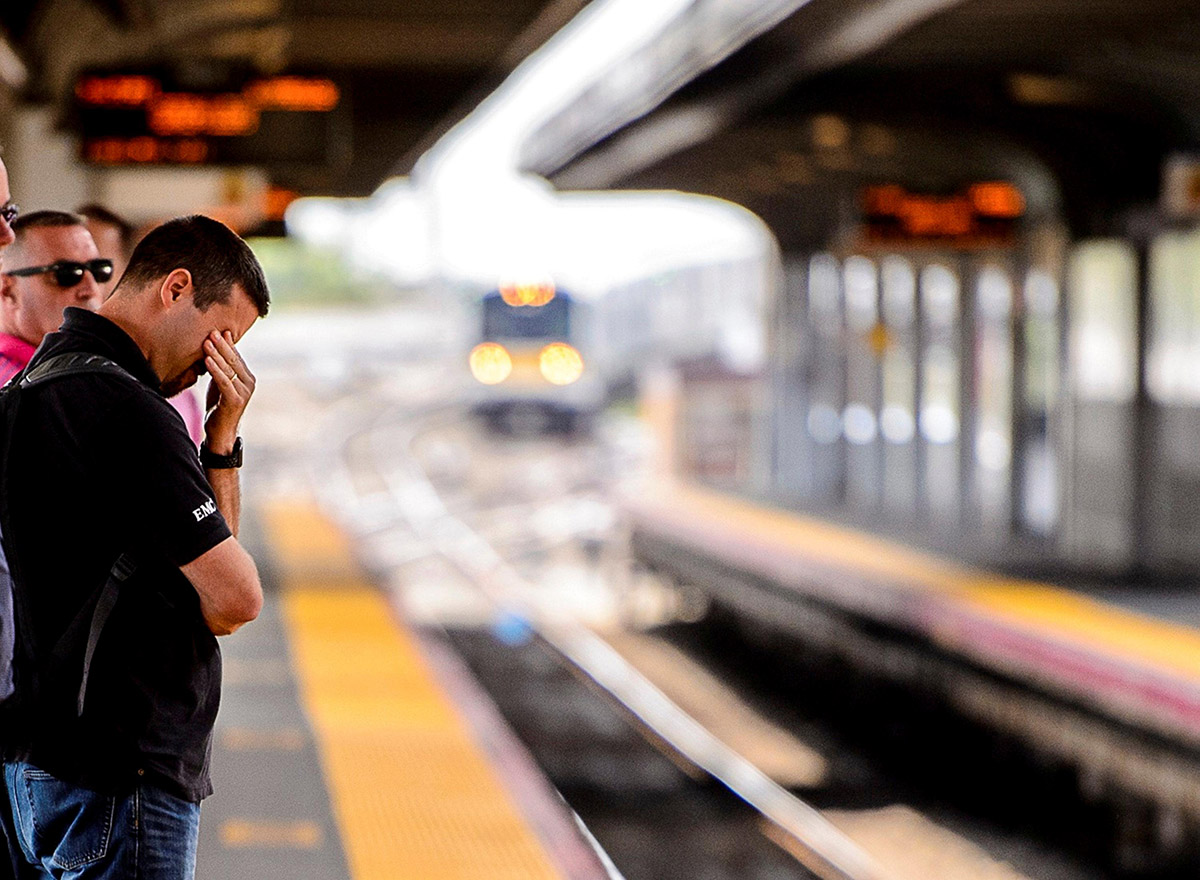
What you need to know about the LIRR right now
Get the latest information on your line plus problem spots and alerts.
FROM LIRR RIDERS
SEE MORE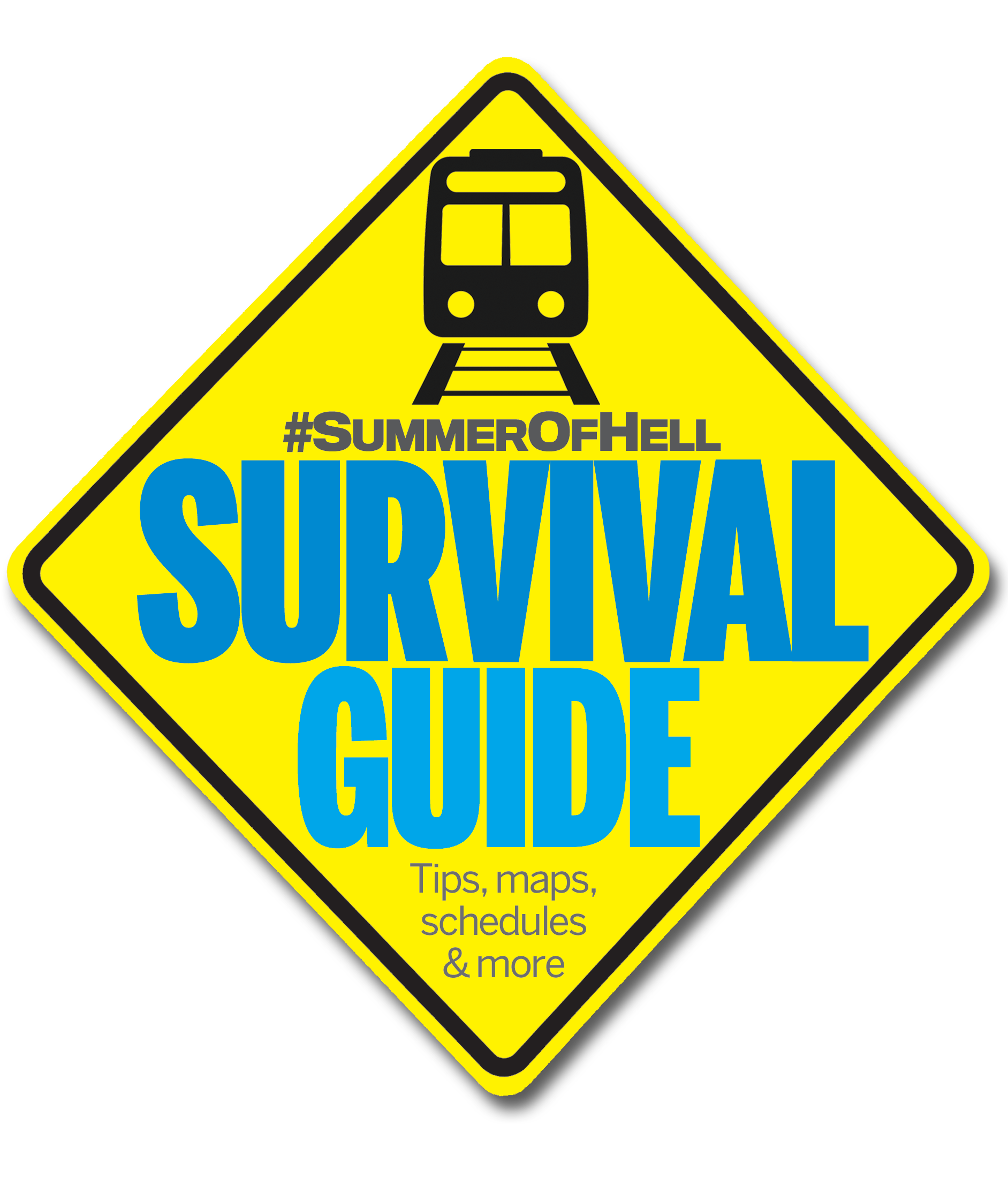 Your guide to the “summer of hell”
Your guide to the “summer of hell”
Latest LIRR Stories
LIRR ‘summer of hell’ options: Pros and cons
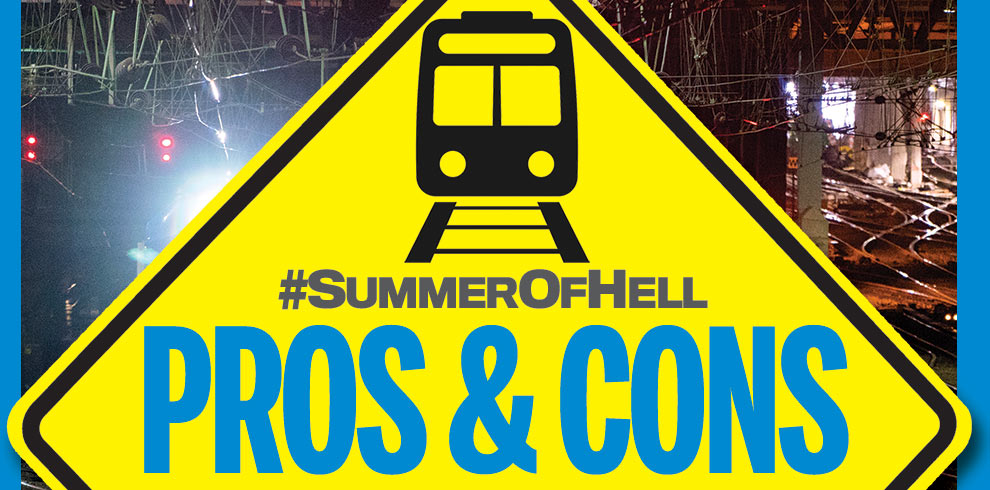
Being armed with plenty of information could help make the Long Island Rail Road’s so-called ‘‘summer of hell’’ a little less hellacious for the LIRR’s 300,000 daily riders.
Here are some useful tidbits that could help commuters navigate the many options available to them:
Avoid commuting altogether
The LIRR is counting on some commuters taking summer vacations, extended weekends or working from home to avoid the risks of commuting in July and August. The MTA has even sent letters to some employers encouraging flexibility.
There are also a number of co-working and temporary office spaces that can be rented by the month both in New York and on Long Island. For those who prefer to stay close to the office, some hotels are sensing an opportunity: Hotel Hayden and Hotel Henri, a pair of boutique hotels near Penn Station, are offering 10 percent discounts off their cheapest rate with the promotional code COMMUTE.
Pros: No commuting = no commuting problems.
Cons: If the MTA’s mitigation plan goes smoothly, the commute may not be so bad on most days, and you’ll be out vacation or personal days that could have been better used at other times. What’s more, if you plan to stay home but find yourself having to get into New York City in a hurry, you may have fewer options than if you planned ahead. There’s also something to be said for face time with employers, employees and clients.
Commute outside the rush hours
The track outages at Penn Station are expected to affect train service only during peak hours, which the LIRR considers Monday through Friday between 6 and 10 a.m. westbound and between 4 and 8 p.m. eastbound. Outside those hours, and on weekends, the LIRR says it has enough capacity to run its normal schedule of trains, even with fewer tracks available at Penn.
Pros: Off-peak travel is typically less likely to be affected by delays, crowding and other problems that tend to occur more frequently during rush hours. It’s also cheaper. Off-peak tickets are being offered at a discount of more than 25 percent compared to their peak counterparts.
Cons: Although rush-hour ridership tends to dip in summer, it is more than offset by the increase in leisure travel in July and August — typically the highest ridership months of the year. So, even outside of rush hours, don’t be surprised for trains to be standing-room-only, and for a lot of that room to be taken up by surfboards. And, because other commuters will likely also avoid the rush hours, off-peak hours may be even busier than usual for the summer.
Traveling outside of the rush hours can also mean either getting up a lot earlier than usual, or getting home a lot later. And if you aim to head home before the rush but run late, you’ll have to pay the difference between the ticket prices on board a train.
What’s more, although the LIRR said it doesn’t expect off-peak service to be affected by the disruptions, if another problem arises during the evening rush, the LIRR is likely to suspend westbound service into Penn Station, affecting off-peak customers. The LIRR is also canceling three overnight trains into and out of Penn Station in order to run some extra trains early in the morning rush hour.
Penn Station
Despite the track outages, the LIRR is still running the majority of usual trains to and from Penn Station in Manhattan, including about 80 percent of its rush-hour service and all of its usual off-peak service.
Pros: Even with the reductions, the LIRR will run more trains, by far, to and from Penn Station than any other New York City terminal. For customers not looking to change their usual commute, sticking with Penn Station may be the best option — especially if they work in midtown Manhattan.
Because some customers are likely to avoid Penn during the construction work, and there are fewer rush-hour travelers during summer, it’s possible Penn might be far less chaotic than on a typical weekday. And while the LIRR is cutting service during the height of the rush hours, it’s adding some trains just outside of them.
The LIRR is also adding some cars to trains to reduce crowding. Helping matters more is the recently opened, spacious customer concourse at the west end of Penn, beneath the Farley Post Office building.
Cons: At the site of Amtrak’s construction work, there’s no telling what could go wrong at Penn and how it will affect service beyond the already planned disruptions. If an unexpected problem does arise at Penn, the consequences could be severe because the station is already operating at considerably reduced capacity.
Penn Station customers could also experience crowding, even during off-peak hours, as commuters try to avoid the rush-hour disruptions. What’s more, for all the inconvenience, the LIRR is offering no fare reductions for travel to and from Penn Station once the service disruptions begin Monday.
Atlantic Terminal
Throughout the summer work at Penn, the LIRR will bolster its service to and from its second-busiest New York City destination, Brooklyn’s Atlantic Terminal. The LIRR is adding some trains to and from Brooklyn, and also diverting some trains there that usually serve Penn Station.
Pros: Regular Brooklyn customers can attest to the experience typically being more pleasant than commuting to and from Penn Station. Opened in 2010, Atlantic Terminal features a fairly robust train schedule, six tracks and a dedicated train yard. That means trains are usually available for boarding well before their departure times — eliminating the mad dash that comes with most rush-hour trains at Penn.
Brooklyn trains are usually far less likely to be affected by delays and other disruptions than those going to and from Penn. It also has direct connections to several subway lines serving Manhattan. Even outside of the summer disruptions at Penn, Atlantic could be a better, and faster, option for some commuters, especially those working in lower Manhattan. To top it off, the LIRR is offering fare reductions averaging 25 percent to and from Brooklyn all summer.
Cons: Despite being a relatively new station, Atlantic Terminal is missing some of the amenities to which Penn Station customers may be accustomed. There’s relatively little seating at the station, no escalators leading up from the subway stations below, and cellular connectivity is abysmal throughout most of the Brooklyn line.
Brooklyn commuters are also more likely to have to transfer at Jamaica to complete their travel. And Atlantic Terminal is not an option at all for customers on the Port Washington line, which does not connect to the station.
Hunterspoint Avenue
Located in Long Island City, Queens, LIRR’s little-used third NYC terminal is expected to take some of the pressure off Penn Station this summer. The LIRR will divert some morning trains that usually go to Penn to Hunterspoint Avenue instead, and also originate more evening trains there.
Pros: With its connection to the 7 subway line, Hunterspoint Avenue is already a popular destination for commuters heading to Manhattan’s East Side. Riders will have another option to and from the station this summer, as the LIRR plans to operate a ferry to and from 34th Street in Manhattan from the nearby NYC Ferry Hunterspoint South terminal.
The spacious “double decker” coaches that the LIRR typically operates at the station are among the roomiest and most comfortable in the LIRR’s fleet. The LIRR is also reducing fares for Hunterspoint Avenue by an average of 25 percent this summer.
Cons: The biggest drawback to commuting to and from Hunterspoint Avenue is the lack of trains. Even during summer months, when the LIRR is adding service at the station, trains will run only during the rush hours at Hunterspoint Avenue — from about 6 a.m. to about 9 a.m. and from about 3:30 p.m. to about 7 p.m. If you travel on a reduced fare to the station this summer, but miss the last train out of Hunterspoint Avenue, you’ll have to pay the difference between a Zone 1 and Zone 3 fare if you travel out of Penn Station instead.
As a station, the century-old Hunterspoint Avenue is pretty bare-bones. There’s one platform and a pair of worn staircases on either end. The 7 train station, while nearby, is not directly connected and commuters could wait in lines to get into the station.
Ferries
To supplement its train service this summer, the MTA is offering ferry service at no extra cost from the newly built ferry terminal at Glen Cove and from the existing NYC Ferry terminal at Hunterspoint South at Long Island City. At Glen Cove, the ferries will take riders to and from 34th Street or Wall Street. From Long Island City, the ferries will go to and from 34th Street.
Pros: The Glen Cove ferry could be an especially good option for commuters living along the Oyster Bay line, especially those working in lower Manhattan, which will have direct ferry service. Generally speaking, ferries could be more pleasant and picturesque than other modes of travel, especially on a nice summer day. The Long Island City terminal is a short walk from the LIRR’s Long Island City station.
Cons: It remains to be seen whether the new ferries will have enough capacity to meet demand. The MTA says, in total, the ferries will be able to accommodate 2,300 people. But only 350 parking spaces will be available at Glen Cove, which will have two ferry departures each morning. At Long Island City, customers will have to take a shuttle bus to connect to the LIRR’s Hunterspoint Avenue station.
The travel time on the ferries, which will only operate during the rush hours, could also be unpredictable. The MTA says the Glen Cove ferries rides will take from 50 minutes to 1 hour and 20 minutes.
Buses
During rush hours, LIRR customers can ride, at no extra charge, express buses between eight designated locations on Long Island — Belmont Park, the Valley Stream LIRR station, Roosevelt Field, the Nassau Coliseum, the Seaford LIRR station, Bethpage State Park, North Hempstead Beach Park and the Melville Park & Ride — and three in Manhattan — at East 34th Street near the Midtown Tunnel, at West 34th near Penn Station, and near Grand Central Terminal.
The MTA is making 200 buses available for the effort, including from its own fleet and from two New Jersey-based coach operators.
Pros: For those in no rush to get to work or back home, the buses — especially those provided by two vendors, Coach USA and Academy Bus — should provide a roomy and comfortable ride during hot summer days. And for those taking the buses to or from western Nassau locations, such as Valley Stream and Belmont Park, the trip might not be all that long.
To minimize travel times, the buses will travel in the HOV lanes of the Long Island Expressway and the Queens Midtown Tunnel. The MTA is also offering free Taste of NY snacks and refreshments at the eight bus locations on Long Island.
Cons: The MTA says travel times will range from 71 minutes to 103 minutes, depending on distance. But, because the buses will have to navigate traffic along with every other vehicle, there’s no telling how long actual travel times will be, and they could be quite long, especially for those traveling to and from Melville.
And although the MTA has set aside parking at some of the Long Island locations, it could be quite crowded at others, including the Valley Stream LIRR station and the Melville Park & Ride. There’s been no parking set aside at the Seaford LIRR station, which MTA officials are calling a “kiss and ride” drop-off/pickup spot.
Subways
The MTA is encouraging commuters to take advantage of its subway system this summer, while service is reduced at Penn Station.
Pros: With nearly 500 stations in the New York City Transit system, there’s no shortage of options for commuters looking to get around. In the mornings, the LIRR will offer free transfers at Jamaica, Atlantic Terminal and Hunterspoint Avenue, which all connect to subway lines serving Manhattan.
To help ensure that there’s enough capacity on trains, the MTA says it will bolster subway service at LIRR stations during scheduled LIRR arrival times. The MTA, which moves 1.6 million people each morning by subway, says even if every impacted LIRR rider took a subway, it would add less than 1 percent to the system’s ridership.
Cons: Like the LIRR, the city’s subway system has faced numerous challenges in recent months, both because of record-high ridership and aging infrastructure. Delays caused by overcrowding have increased substantially in recent months. The crowding and long waits for trains may be especially treacherous in the summer months, when the underground stations tend to be oppressively uncomfortable.
The lines to get into subway stations at major LIRR transfer points, such as at Jamaica and Hunterspoint Avenue, could also be particularly long this summer. And, largely for logistical reasons, the MTA is not cross-honoring LIRR tickets in the evening. So, if you don’t have a MetroCard, you’ll have to pay to ride the subway on your way home.
Driving
Customers looking to avoid public transportation altogether could opt to drive to work this summer.
Pros: There’s nothing like the comfort of your own car. Blast the stereo, and the air conditioner, and choose the best route. The MTA and New York State Department of Transportation are taking several steps to reduce traffic on the roads this summer, including by expediting several construction projects on the MTA’s bridges and tunnels with the goal of finishing them by July 8, and suspending other road work or moving it to overnight hours.
The implementation of cashless tolling at some major crossings, including the Queens-Midtown Tunnel and Robert F. Kennedy Bridge, has helped. To further ease traffic, the MTA is offering 50 percent discounts for trucks that cross tolls during overnight hours.
Cons: New York traffic is among the worst in the nation, and there’s pretty much no avoiding it if you’re driving to and from Manhattan. The extra LIRR commuters who take to the roads, and the 200 express buses that the MTA will operate to serve railroad commuters, will only add to the congestion.
The MTA and state DOT say they’ll be closely enforcing the rules of the road, including HOV regulations, throughout the summer. Then there’s the matter of finding, and paying for, parking in Manhattan. A garage there could cost in the neighborhood of $500 a month.
LIRR disruptions mean money lost for Long Island’s economy
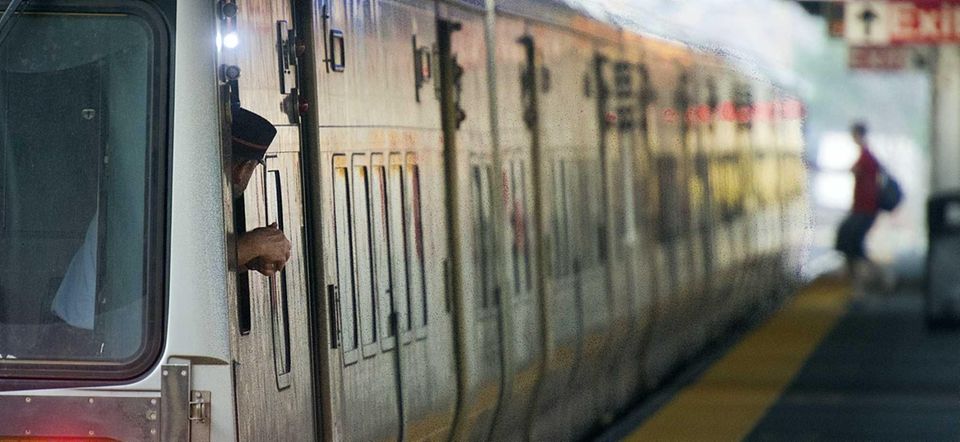
The Long Island Rail Road plays a key role in the local economy, with its riders bringing home about $30 billion in wages each year from New York City.
The railroad for decades has connected local residents and businesses to the high-paying jobs and opportunities offered by the city.
So major LIRR service disruptions can lower productivity and cause commuters to lose out on earnings as they wait out train delays or sit in traffic on the Long Island Expressway.
Large repair projects – such as the summerlong track work at Penn Station that will reduce rush-hour service starting July 10 and future work on two of four East River tunnels that will last a couple of years – could result in less money getting funneled into the Long Island economy.
A railroad bringing home billions
The LIRR transports tens of thousands of Island residents daily to their jobs in New York City. Those workers bring home billions of dollars in earnings each year, helping to fuel the region’s $160 billion economy.
96,000
Daily LIRR commuters going to NYC jobs
$30 billion
Estimated annual earnings from LIRR commuters with NYC jobs
$160 billion
Size of Long Island’s economy, 2016
Sources: LIRR, Regional Plan Association, IHS Global Insight
This $30 billion forms a critical pillar for the Long Island economy as LIRR riders spend their wages at restaurants and shops in downtowns across Nassau and Suffolk counties.
Commuters’ wages also go toward purchasing and maintaining homes here. Houses that are close to a train station have higher values than those farther away.
Commuters to Manhattan earn 34 percent more, on average, than Long Island residents who work close to home, according to the U.S. Census Bureau:
The railroad has also served as an impetus for the construction of apartment buildings near stations designed to keep young people on the Island by giving them easy access to employment and nightlife in Manhattan and Brooklyn.
Island employers are counting on more LIRR reverse commuters to fill jobs with the local workforce aging.
Lost worker productivity
LIRR service disruptions rob commuters and the businesses where they work of time.
Thousands of delayed and canceled LIRR trains during the morning and evening rush hours in 2016 resulted in the loss of millions of dollars in worker productivity last year, according to an estimate from the office of state Comptroller Thomas DiNapoli:
17,951
Delayed or canceled trains
7.5 million
riders affected
$60 million
Cost of lost productivity
Where LIRR riders work
The LIRR carries commuters to New York City who work in high-paying professions. Forty-five percent work as stock brokers, investment bankers, lawyers, accountants and other professional service providers.
Source: NYS Comptroller’s Office
The faces of lost earnings
Written by Daysi Calavia-Robertson and Vincent Barone
Marissa O’Connor, Bethpage
Delayed Long Island Rail Road trains cost O’Connor her job as a waitress at a midtown Manhattan restaurant.
The 25-year-old said she was fired the third time, in three months, that she missed a shift. She lost her job, where she earned $7.50 an hour plus tips, in October.
O’Connor’s 45-minute commute “usually doubled” to about an hour-and-a-half. She was about 40 minutes late to work or The New School, where she earned a master’s degree in psychology in May, each time a train was delayed or canceled.
“It took me seven months to financially recover from being fired,” she said. “I got behind on my rent and had to borrow money to pay it.”
Erica Lam, South Hempstead
Lam, an NBC news producer and a mother to two young boys, said delayed and canceled LIRR trains led her nanny to quit. “On average, I’d get home about an hour or two late,” said Lam. “But one night I was three hours late.”
Lam, who said she paid her nanny about $600 in overtime pay, is now looking for a new nanny and may have to pay overtime to a new hire.
Train delays also take away time she could be spending with her children: “These delayed and canceled trains are robbing me of tucking them in and kissing them good night.”
Gerard Joseph, Valley Stream
Joseph, a financial controller, pays a nanny to watch his younger daughter and a day care for his older daughter.
For every half-hour he’s late to pick up his older daughter, the day care charges $20. With the nanny, he also has to pay more or tip more to compensate for being late.
“If it happens two or three times in a week — that’s good money right there,” Joseph said.
Read more about the impact of LIRR delays on these commuters.
What do train signals actually do?

”Signal trouble” is a phrase Long Island Rail Road commuters know well – it often is the cause of the delays and cancellations that frequently beleaguer riders .
But what do train signals actually do?
Signal systems control train traffic by providing critical information to locomotive engineers, and directly to trains on how to proceed. A functioning signal system is about as vital to the operation of a railroad as the tracks and train cars themselves, experts say.
“It tells them what speed they’re supposed to be going. It tells them if they should be stopping at the next signal. It tells them the traffic conditions ahead of them so they can control their train accordingly,” Natale said. “You could not run a railroad without them.”
Signal problems
Since Jan. 1, the LIRR has cited “signal trouble” as the reason for service problems on at least 60 different days.
Thursday's @newsday cover: Penn Station signal trouble causes ‘unbearable’ #LIRR commute https://t.co/atBdGJAzZq pic.twitter.com/jzkl8WW4BL
— Newsday (@Newsday) May 11, 2017
A major signal problem can be especially disastrous, as seen on May 10, 2017, when a signal problem involving one train led the LIRR to cancel nearly 90 trains during the PM rush, resulting in dangerous crowding in Penn Station.
And this is what a signal system looks like:
The pattern and sequence of red, yellow and green lights displayed on a signal direct a train on where to go, at what speed to travel, and what conditions are ahead.
An outdated system
But much of the LIRR’s signal system, including at Penn Station, relies on decades-old technology, including electrical wiring installed in the 1930s.
Penn’s 80-year-old railroad signal system is a complex electrical network of wires and colored light displays that performs a critical function — providing vital information to engineers, and directly to trains, on how to proceed. At complex rail junctions, or “interlockings,” signals are controlled by dispatchers monitoring train movements from control centers or towers.
Newer, computer microprocessor-based signaling technology could allow the LIRR to run more trains and more closely monitor them.
While Penn’s owner Amtrak is taking this summer to complete track work, the project will not involve its signal system, which experts say is in dire need of renewal. Amtrak has said it is trying to develop plans and a budget to do so.
To not have a plan going forward for the signal issue, I think, is a looming catastrophe.– Sen. Todd Kaminsky (D-Long Beach)
Fixing LIRR problems means fixing Penn Station, too
The constant major LIRR service disruptions into and out of Penn Station speak to the many challenges facing the century-old rail hub – the busiest in North America.
Although several plans are underway to address Penn Station’s strained capacity and crumbling infrastructure, it could be a long time before commuters see meaningful results. In the meantime, the problem is getting worse by the day, experts said.
The station
New York Pennsylvania Station was built in 1910 and underwent a major reconstruction in the 1960s that included the demolition of most of the original station so that Madison Square Garden could be built on top of it.
Penn Station is the primary Manhattan terminal for three major railroads—the LIRR, NJ Transit and Amtrak. Six MTA subway lines also operate through Penn Station. Burgeoning development on Manhattan’s West Side and increasing ridership continues to put added strain on Penn.
The problem
While use of the station has soared, investments in its infrastructure, including its connecting tunnels across the East River and Hudson River, have not kept up, experts say.
And superstorm Sandy in 2012, which flooded those tunnels with tens of millions of gallons of corrosive saltwater, only hastened the deterioration of the concrete, tracks, switches and electrical components.
The increase in the number of LIRR disruptions caused by problems in and around the East River Tunnels since superstorm Sandy
Complicating matters further is Penn’s management structure. Although it runs the fewest trains and serves the fewest customers of all the railroads there, Amtrak has owned and operated Penn Station since the mid-1970s.
The LIRR has said “third party operations,” including Amtrak, were to blame for about 8 percent, of the LIRR’s 17,951 delays last year.
But while the LIRR, which runs about half of all trains into and out of Pen, covers much of the cost of maintaining and repairing the tracks it uses, only Amtrak is allowed to do the actual maintenance and repair work. The arrangement has led to frequent infighting among the three railroads when something goes wrong.
Long-term solutions
There are some long-term projects in the works that will ease some of the infrastructure problems surrounding Penn Station.
The Gateway Project
The $24 billion Amtrak project includes a series of major upgrades in and around Penn Station including the creation of a second rail tunnel across the Hudson River.
By adding new tracks and station capacity at Penn and modernizing its rail infrastructure, the project would also reap benefits for LIRR rider.
East Side Access
The MTA’s $10.2 billion megaproject will link the LIRR to a new customer concourse at Grand Central Terminal via newly-bored tunnels.
It will provide a second Manhattan station for the LIRR, easing congestion at Penn and providing more alternatives for the railroad and for customers during unplanned service disruptions.
Superstorm Sandy repairs
The MTA plans to make repairs to the two East River Tunnels that sustained the heaviest damage from superstorm Sandy.
When the project does begin, Amtrak plans to take each of the tunnels out of service for a year at a time–reducing capacity into and out of Penn, potentially forcing the LIRR to reduce rush-hour service during the project.
Empire Station/Moynihan Train Hall development
Gov. Andrew M. Cuomo in September announced a $1.6 billion plan to redevelop and expand Penn Station.
The plan will allow the LIRR to share space with Amtrak in the long-planned Moynihan Train Hall at the Farley Post Office complex across Eighth Avenue.
The project includes a renovation of the LIRR’s existing Penn Station concourse featuring wider walkways, taller ceilings and a digital pseudo-skylight, but would not increase actual track capacity.
A new Penn Station management structure
Some MTA officials, advocates and elected leaders have pushed for the MTA to take over Penn.
They reason the MTA has more resources to run the station and would make it a higher priority than Amtrak, which operates in 45 other states.
As an alternative, some have called for the LIRR and NJ Transit to take a more active role in the operation of Penn Station, including potentially as part of a separate management agency representing all three railroads.
Shorter-term solutions
Although most of the major projects planned to improve Penn Station are still years away from completion, some observers have pointed to nearer-term changes that could reduce the frequency and severity of service disruptions.
They include overhauled maintenance practices and more pre-planned service shutdowns to perform work on tracks.
Some have also called on the LIRR to improve its customer communications so that riders get more accurate, timely and helpful information during service problems, including about travel alternatives.
It’s going to get better. . . But you’re always going to have a system that was built in the 18- and 1900s and was not designed for the number of people who want to go to the same place at the same time as we have now.– MTA Board member Mitchell Pally
However, with the LIRR on pace to break its modern ridership record for the third-straight year and growing use of Penn Station, things may get considerably worse before they improve, experts say.
LIRR trouble: Tips for navigating delays and cancellations
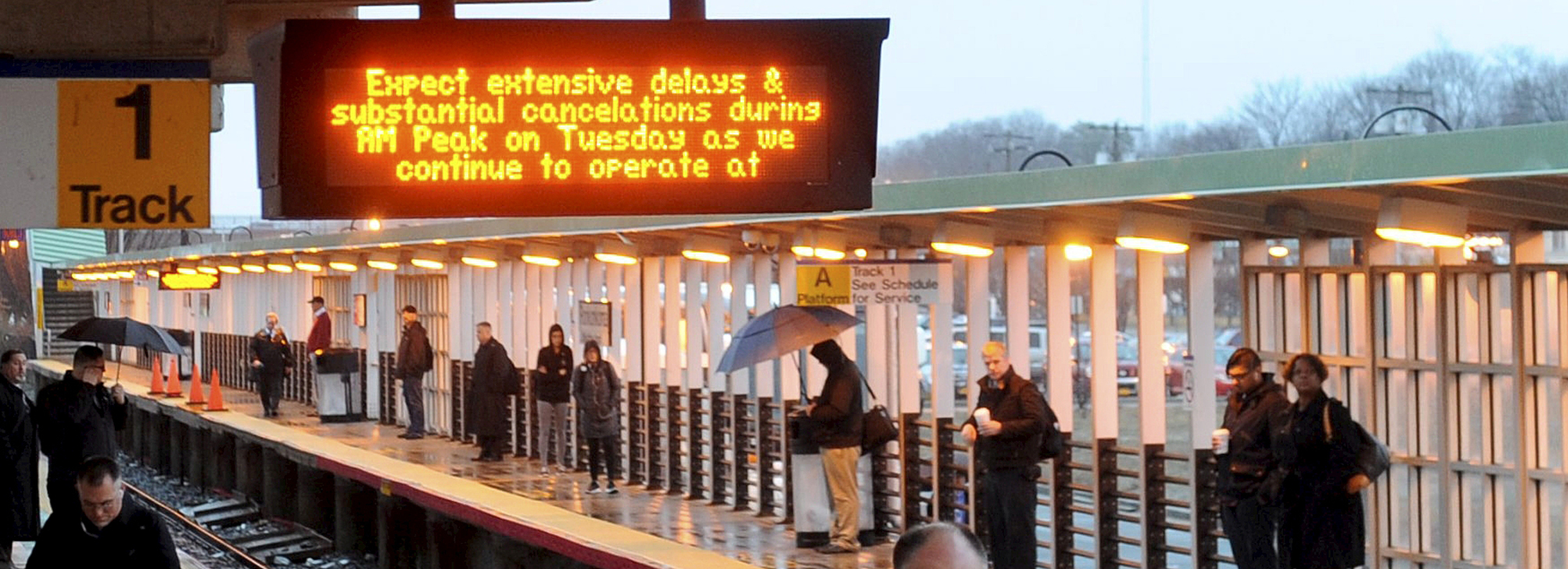
Train derailments are a big deal. Making repairs often entails lifting one or more 125,000-pound train cars and putting them back on the tracks, towing them away, and then repairing or replacing damaged track.
There’s often no telling how long it will take, especially if a derailment occurs in or near Penn Station, where Amtrak, and not the Long Island Rail Road, performs repairs and where spaces can be confined. Complicating matters, repairs often can only be conducted outside peak hours, when fewer trains are running. Then there’s more space to work, and more resources available.
Although Monday’s NJ Transit derailment did not affect the tracks or tunnels that the LIRR uses, it has given up access to some tracks during the rush hours, so that NJ Transit and Amtrak can operate. That means fewer LIRR trains running to and from Penn Station, extensive delays, and crowding.
Here are some tips to help commuters navigate the problems:
Traveling outside of peak hours
Upside: Your commute may very well be close to normal.
Downside: You’ll have to leave work very early or stay very late.
Even with fewer tracks available at Penn Station, the LIRR has enough capacity to run its normal off-peak schedule, which the LIRR defines as any time besides 6-10 a.m. and 4-8 p.m. on weekdays.
The earlier, or later, you can travel outside the rush hour, the better.
Trains will probably be more crowded than you would usually find during off-hours, but there’s less chance of disruptions — as long as nothing else goes wrong.
If you’re buying a daily LIRR ticket, traveling during off-peak hours is also cheaper, and it may be a little easier to find parking at a station.
Traveling to/from Atlantic Terminal
Upside: There are plenty of trains at this terminal.
Downside: You’ll likely have to transfer.
The Downtown Brooklyn station is the LIRR’s original New York City terminal, and its second busiest, with plenty of trains running during peak and off-peak hours.
Unless you travel on a few select lines that run directly to and from Brooklyn, including Hempstead and Far Rockaway, it’s likely you’ll have to transfer, but you can connect to any branch other than the Port Washington line at Jamaica.
Brooklyn trains may be more crowded than usual during a Penn Station service disruption, but it’s less likely they will be canceled or delayed.
This option might be especially convenient to commuters working in Lower Manhattan, which is a short subway ride from Atlantic Terminal on the 4 and 5 lines. New York City Transit is cross-honoring LIRR fares during peak hours on its 2, 3 subway lines, which connect Atlantic Terminal to Penn Station. Connections are also available to the B, D, N, Q and R trains.
Traveling to/from Hunterspoint Avenue
Upside: Easy access for commuters from the East Side; double-decker trains.
Downside: This option only works during peak hours.
The LIRR’s little-used third New York City terminal may be a good option for some LIRR commuters, especially those working on Manhattan’s East Side. Grand Central Terminal is a short subway ride away on the 7 line, which is cross-honoring LIRR fares during peak hours.
However, relatively few trains run to and from the outdoor Queens station, and then only during peak hours — 6 to 9:30 a.m. and 3:30 to 7 p.m. Even fewer trains run to another station just west, Long Island City.
Because only diesel trains run to and from Hunterspoint Avenue, there’s a good chance you’ll have to transfer at Jamaica. On the upside, the double-decker diesel trains are more spacious and comfortable than most.
Traveling to/from Penn Station
Upside: More trains mean a better chance of getting on one.
Downside: Heavy crowds for trains means you might not get one.
Even with several rush hour cancelations, the LIRR still runs more trains to and from Penn Station than other stations. So, for some commuters, it may be their best option.
Expect heavier crowds than usual at Penn and on trains, and delays.
Riders should download the LIRR’s free Train Time app for real-time updates on delays and cancellations and sign up for email and text-service alerts at mymtaalerts.com.
Skip the LIRR altogether
Upside: Traveling via other mass transit is likely more predictable, and cheaper.
Downside: You’ll add hours to your trip.
Some commuters have other options including driving, taxis, ride-sharing services, the subway or, if they’re lucky, telecommuting.
If you’ve got the time, but want to keep the cost of your commute down, you can take the E, J and Z trains to Jamaica, Queens and connect to your LIRR train there. There are also several NICE Bus routes that operate out of Jamaica and offer free transfers from the subway for MetroCard users. They include routes serving Hempstead, Great Neck, Mineola, and other communities along the way.
Some buses even offer Wi-Fi connections and USB charging stations. Traveling by bus could add hours to your trip, but it may also be a little more predictable.
Bumpy Ride: Rising Fares on the LIRR
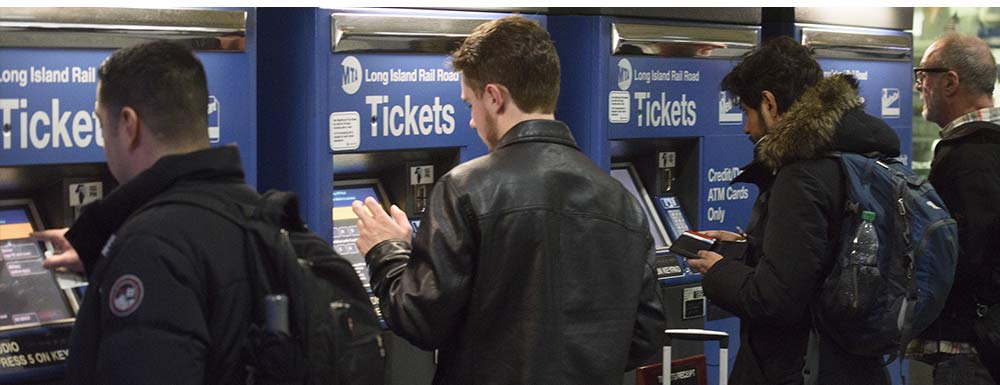
It’s costing riders more to ride a Long Island Rail Road train.
Fares went up beginning March 19, although monthly pass holders won’t see the increase until they buy their April ticket.
On average, most riders will pay about 4 percent more, but some tickets will go up by as much as 6 percent.

| Zone | Monthly fare pre-hike | New fare | Percent increase | One-way peak pre-hike | New fare | Percent increase |
|---|---|---|---|---|---|---|
| 1 | $184 | $190 | 3.26% | $8.25 | $8.75 | 6.06% |
| 3 | $218 | $226 | 3.67% | $10.00 | $10.25 | 2.50% |
| 4 | $252 | $261 | 3.57% | $11.50 | $12.00 | 4.35% |
| 7 | $287 | $297 | 3.48% | $13.00 | $13.50 | 3.85% |
| 9 | $338 | $350 | 3.55% | $15.25 | $16.00 | 4.92% |
| 10 | $377 | $391 | 3.71% | $18.25 | $19.00 | 4.11% |
| 12 | $446 | $461 | 3.36% | $21.75 | $22.50 | 3.45% |
| 14 | $485 | $500 | 3.09% | $28.25 | $29.25 | 3.54% |
LIRR fares are based on geographical zones; the higher the zone number, the higher the fare is and the farther the distance from Penn Station.
MetroCards and MTA bridge and tunnel tolls will be going up too.
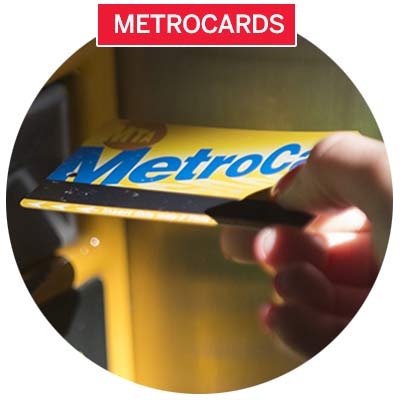
The cost of a monthly MetroCard increases by $4.50 to $121
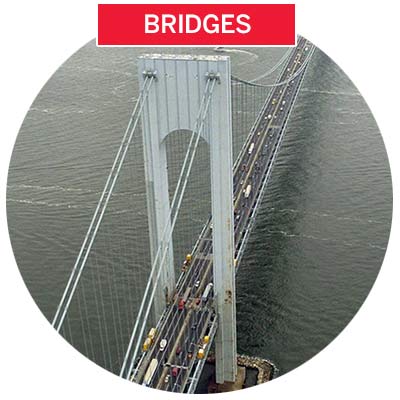
Tolls on most major bridges increase by 50 cents or less
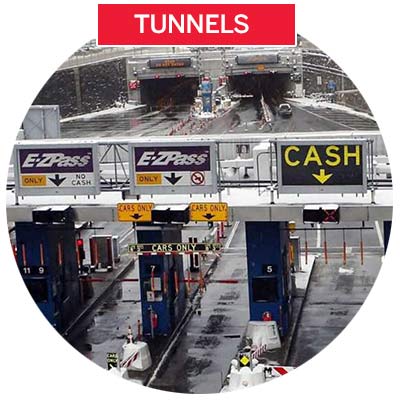
Tolls on most major tunnels increase by 50 cents or less
One piece of the puzzle
A monthly ticket between Mineola and Penn Station used to cost $178 in 2007. It will cost $261 beginning in April. For Ronkonkoma commuters, a monthly pass cost $267 ten years ago. It’s going up to $391. And, as expensive as fares are, MTA officials say they pale in comparison to the cost of operating the largest public transportation system in the United States. Fares account for about 40 percent of the MTA’s total revenue. Most of the rest comes from dedicated taxes and bridge and tunnel fares—meaning drivers are covering part of LIRR riders’ trips.
But LIRR riders still aren’t happy about the latest fare hike
It’s the sixth in the last ten years. In that time, LIRR fares have gone up by about 38 percent.
Someone please explain this fare hike to me? I give you more money so you can get me home later? Surely I am missing something cc: @LIRR 👏🏻
— shannon gracie (@shay_gray) March 23, 2017
@mradzicki seriously, I am 4 for 4 with delayed AM trains this week, 2/3 on the PM. Well worth a fare hike. #LIRR
— John G. LaPlante (@JGL598) March 23, 2017
Fare hike took place yesterday and two of my trains have been canceled so far. Cool story, #lirr
— Bridget Mary (@ohbhayde) March 20, 2017
@LIRR my 1/2 hour train ride is at an hour, and counting. It's getting to the point where this happens more often than not. But fare hike?
— Erin Rafferty (@errafferty) March 17, 2017
But the MTA says the upcoming fare hike just keeps up with inflation—averaging about 2 percent a year. And they also point out that the increase is the lowest since the MTA adopted a schedule of raising fares every other year back in 2009.
But how do ticket prices compare with other costs over the last decade, on average?

38%
Some of the steepest hikes have been from Mineola to Penn Station: $178 to $261, and from Ronkonkoma to Penn: $267 to $391.
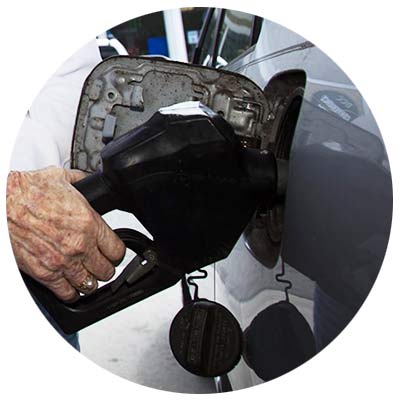
3.3%
A gallon of unleaded gasoline has gone from $2.27 to $2.35

7.8%
A gallon of milk has gone from about $3.07 to $3.32
Source: Bureau of Labor Statistics
Improvements on the way
Still, MTA officials say customers are getting more for their fare dollar than ever before. The railroad says it’s working hard to modernize and expand the 183-year-old railroad, including through big-ticket infrastructure projects. You just won’t see the full impact of these projects for a few years.
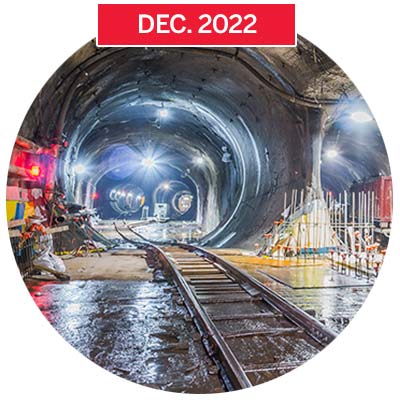
East Side Access
$10.2B
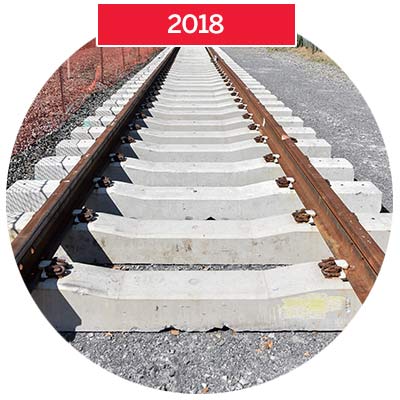
Double Track project
$387.2M
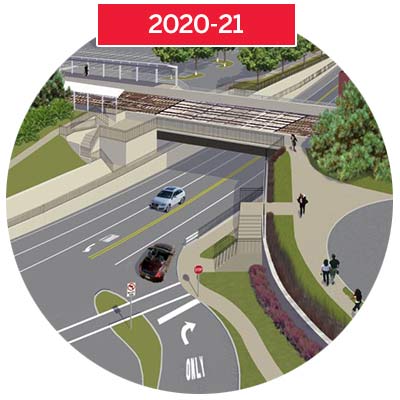
Expansion, including 3rd track
$2B
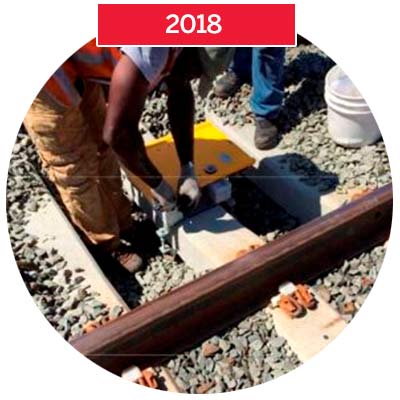
Positive train control crash technology
$968M
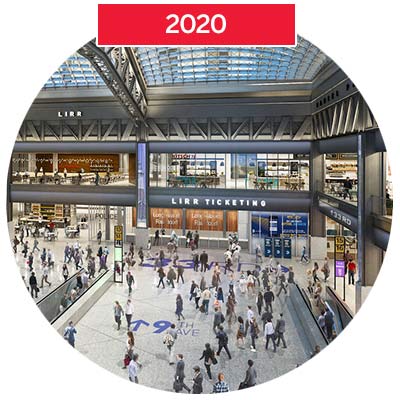
Penn Station renovation
$1.68B
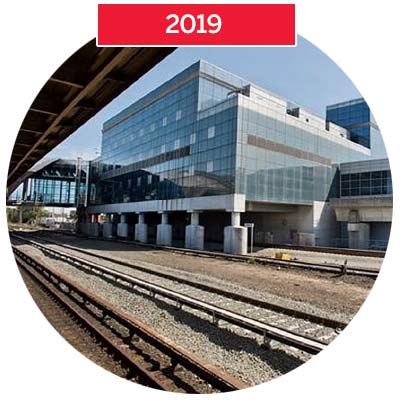
Phase 1 of Jamaica upgrade
$442M
In the meantime, the MTA has made some improvements over the years, including adding trains on some lines, the recent roll out of e-tickets and station renovations. And the agency has said it will consider new ideas, like discounts for trips made within Long Island and within New York City, when making further changes to fares in the future.
It won’t take all that long. Another fare hike is scheduled for 2019.
Read the latest LIRR newsThe Amtrak and LIRR relationship: It’s complicated

There’s often more than one railroad to blame when Long Island Rail Road service is disrupted at the height of the evening rush hour at Penn Station.
Limited e/b service out of Penn Babylon, Port Jefferson, Port Washington, Ronkonkoma Branches due to Amtrak switch trouble at Penn Station
— LIRR (@LIRR) March 6, 2017
A complicated relationship
Although the LIRR operates the majority of trains running into and out of Penn — the busiest rail hub in the country — the station, its tracks and the tunnels leading to and from the terminal are owned and maintained by Amtrak. The railroad took control of the station from the bankrupt Penn Central Transportation Co. in the early 1970s.
Frequent tensions
The peculiar arrangement has long fueled tensions between Amtrak and the LIRR’s parent agency, the Metropolitan Transportation Authority.
MTA Board members have, over the years, repeatedly called for the authority to take over Penn, arguing that its own workforce is better equipped to address maintenance and repair issues, and would give them higher priority because of their direct effect on LIRR customers.
Placing the blame
The LIRR has said “third party operations,” including Amtrak, were to blame for 1,463 LIRR delays in 2016 — about 8 percent of the agency’s 17,951 delays last year. That was significantly less than the 2,605 third-party-caused delays in 2015.
Past efforts to improve the working relationship between the two rail providers included a push by the LIRR Commuter Council and by Sen. Chuck Schumer (D-N.Y.) to include an LIRR riders’ representative on the Amtrak Board of Directors.
Who foots the bill?
Complicating matters further, even though Amtrak is responsible for maintenance and repairs in Penn and the tunnels, the LIRR foots most of the bill.
Under a nearly 30-year-old “joint facilities agreement,” maintenance costs are divided between Amtrak and the LIRR “in proportion to each party’s level of usage,” according to MTA documents. Amtrak runs 140 trains into and out of Penn on a weekday, compared with nearly 500 LIRR trains.
Clashes between LIRR and Amtrak in recent years have extended past routine service disruptions. The MTA has blamed Amtrak for recent delays in the construction of its massive $10 billion East Side Access megaproject, saying Amtrak has not provided the cooperation it promised, including by taking some tracks out of service on specified nights and weekends, and lending some of its workers to the effort.
Amtrak has said it is continuing to work closely with the MTA to minimize disruptions.
Future challenges for a strained relationship
The tensions between Amtrak and the LIRR could get worse once Amtrak commences a long-discussed plan to repair superstorm Sandy flooding damage in two of the four East River tunnels leading into and out of Penn Station.
Amtrak has said the repair work, which the MTA is largely funding through federal grant money, will require shutting each of the two affected tunnels for one year at a time. That could force the LIRR to reduce the number of rush-hour trains it operates, and magnify any unanticipated service problems that arise while one of the tunnels is down.
Some MTA officials have also expressed resentment over the state’s original plan to renovate the Farley Post office building adjacent to Penn into a state-of-the-art new train hall that would exclusively be used by Amtrak.
In September, Gov. Andrew M. Cuomo announced that he had persuaded Amtrak to share the new space with the LIRR, saying the original plan made “no sense for anyone.”
A new 255,000 square foot Train Hall at the Farley building will house passenger facilities for @LIRR and @Amtrak: https://t.co/bm8krckdU9 pic.twitter.com/kJA8NvnCc1
— Andrew Cuomo (@NYGovCuomo) September 27, 2016
The expansion and reconfiguration of Penn Station could bring some relief for LIRR riders, as could the completion of East Side Access, which will provide the railroad a second Manhattan hub and an extra set of tunnels to and from Long Island. That project is set for completion by the end of 2022.
